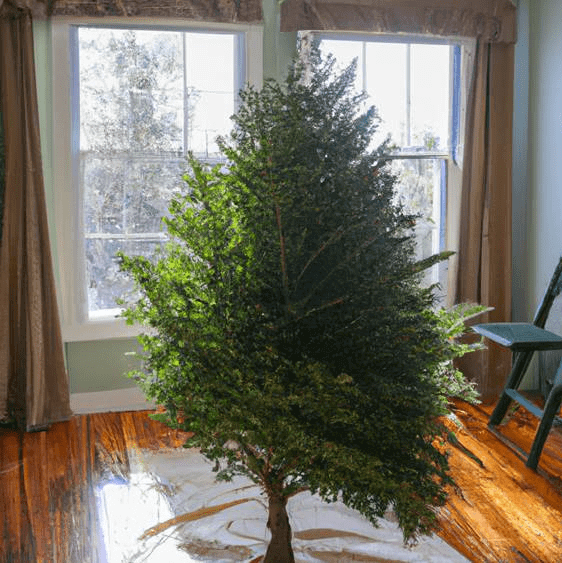
Introduction:
The holiday season, for many, is synonymous with the invigorating scent of freshly cut evergreens. In this extensive guide, we’ll explore the history of the Christmas tree, trace its roots back to the Middle Ages, delve into sustainable practices in modern Christmas tree farming, and provide expert tips on how to keep your cut Christmas tree fresh throughout the festive season.
Unwrapping the History of the Christmas Tree:
The Christmas tree tradition has a rich history dating back to the Middle Ages when it was known as the Paradise Tree. Adorned simply with large red apples, symbolizing the Feast of Adam and Eve celebrated on December twenty-fourth, the tree marked a modest yet meaningful beginning to a beloved tradition.
Evolution from Forests to Farms:
As time progressed, the Christmas tree tradition evolved with the addition of lights and spread from Germany to various parts of the world. Before 1950, the majority of Christmas trees were sourced from forests. However, a significant shift occurred, and today, over ninety percent of Christmas trees are grown and harvested from specialized Christmas tree farms. These farms operate sustainably, planting two to three seedlings for every tree cut, ensuring Christmas trees remain a renewable resource.A noteworthy environmental impact of Christmas tree cultivation is the annual cultivation of over a million acres of trees, producing enough oxygen to sustain eighteen million people. This underlines the positive contribution of the Christmas tree industry to our environment.
Expert Tips for Caring for Your Cut Christmas Tree:
If you bring home a cut tree this holiday season, several expert tips ensure it stays fresh throughout the festivities.
Re-cutting the Trunk: When you get your cut tree home, make a fresh cut to the trunk. This helps the tree absorb water more effectively, ensuring its longevity. If you’re not ready to place it in the stand immediately, could you put it in a bucket of water to keep it hydrated?
- Re-cutting the Trunk: When you get your cut tree home, make a fresh cut to the trunk. This helps the tree absorb water more effectively, ensuring its longevity. If you’re not ready to place it in the stand immediately, could you put it in a bucket of water to keep it hydrated?
- Hydration is Key: Once inside, your tree will need ample water to stay fresh. A freshly cut tree can absorb up to a gallon of water within the first twenty-four hours and several quarts afterward. To avoid the hassle of water spillage while maintaining hydration, a simple solution is to place a few ice cubes in the stand.
- Protect from Heat Sources:Protect your tree from heat sources, such as vents and fireplaces. Lights on your tree also emit heat, so limiting their usage will prevent the tree from drying out too quickly. Remember, the longer the lights stay on, the quicker your tree may lose its freshness.
- Strategic Lighting Practices: Be mindful of the impact of lights on your tree’s freshness. Unplug them when you’re away or before bed to ensure your tree remains hydrated and safe.
Conclusion:
Caring for a cut Christmas tree involves understanding its historical significance, appreciating the sustainability efforts in modern tree farming, and implementing expert tips for freshness. Whether it’s the delightful fragrance that fills your home or the knowledge that your tree contributes to a greener planet, the experience of caring for a cut Christmas tree becomes a meaningful and sustainable celebration. As you embark on this festive journey, armed with historical insights and practical tips, may your holiday season be filled with the joy and vibrancy of a fresh and carefully nurtured Christmas tree.
Click “DO IT FOR ME” to request a FREE quote.

Source: customer-service@bestyard.com in collaboration with Associated Landscape Contractors of Colorado
















